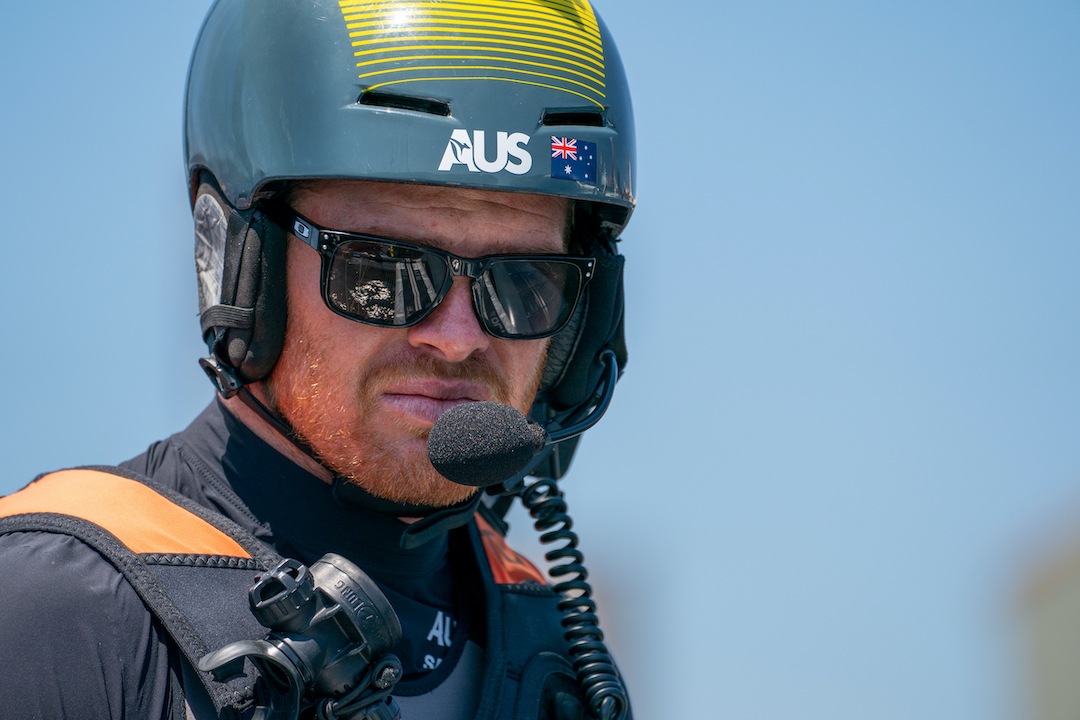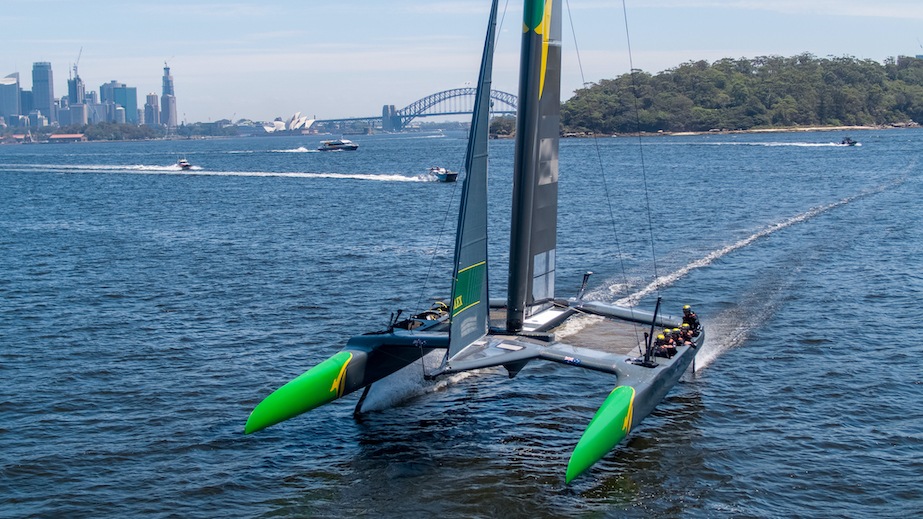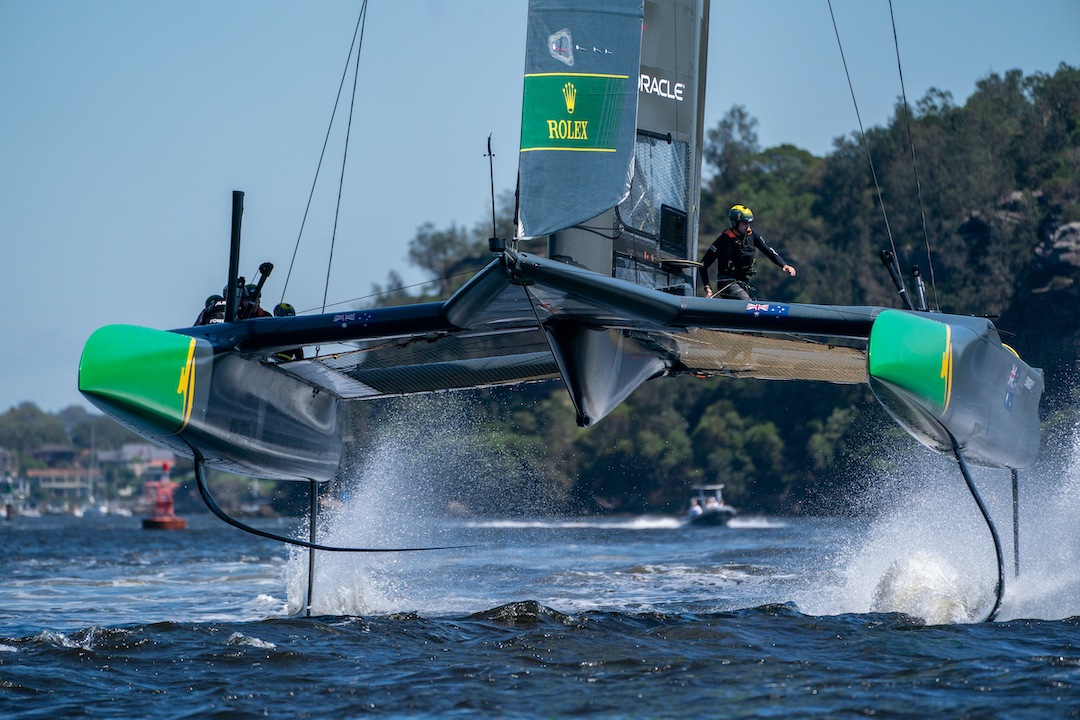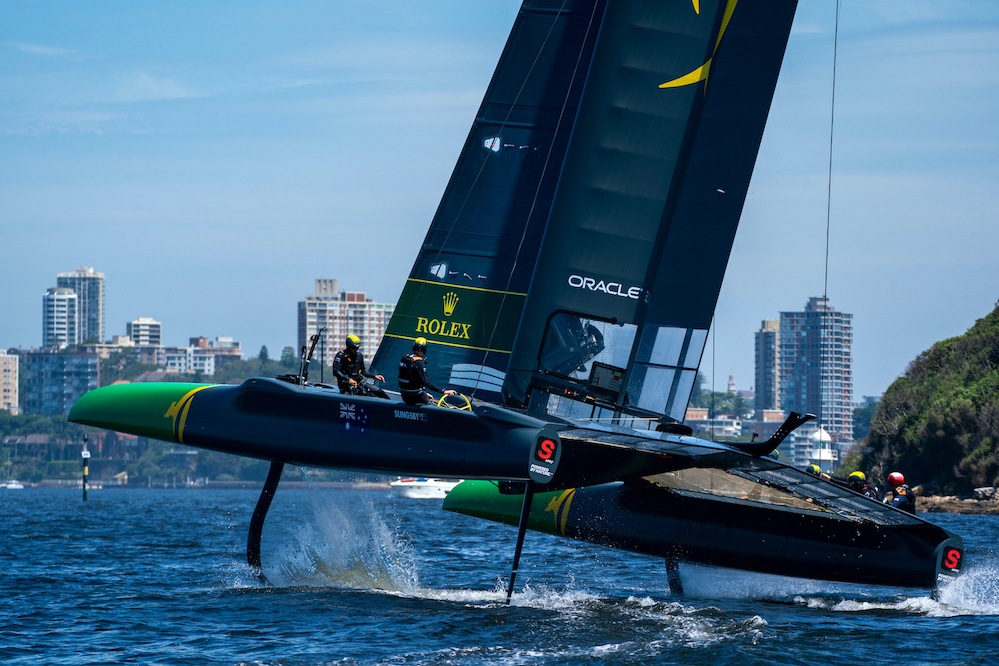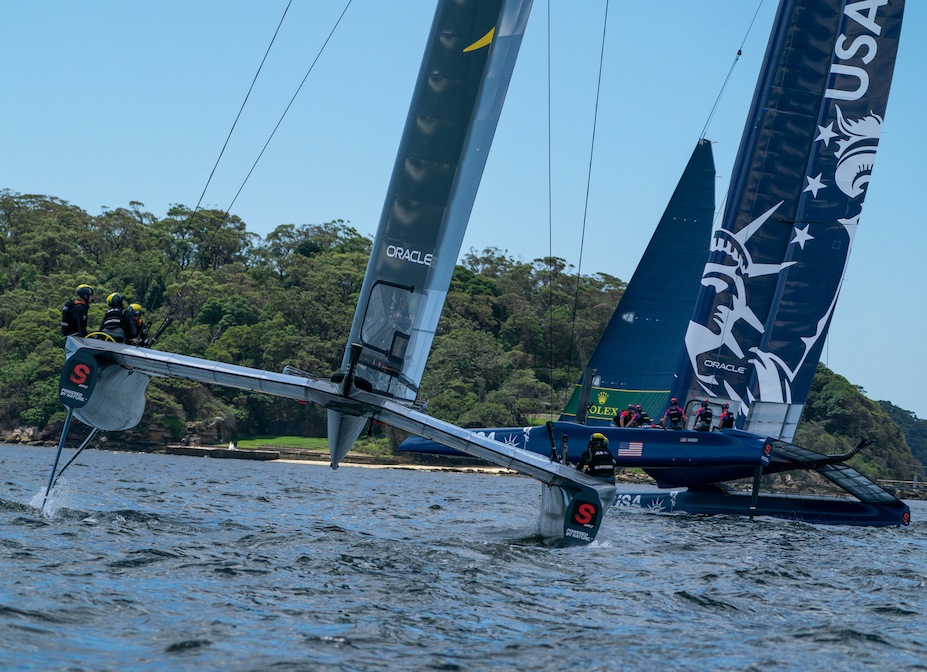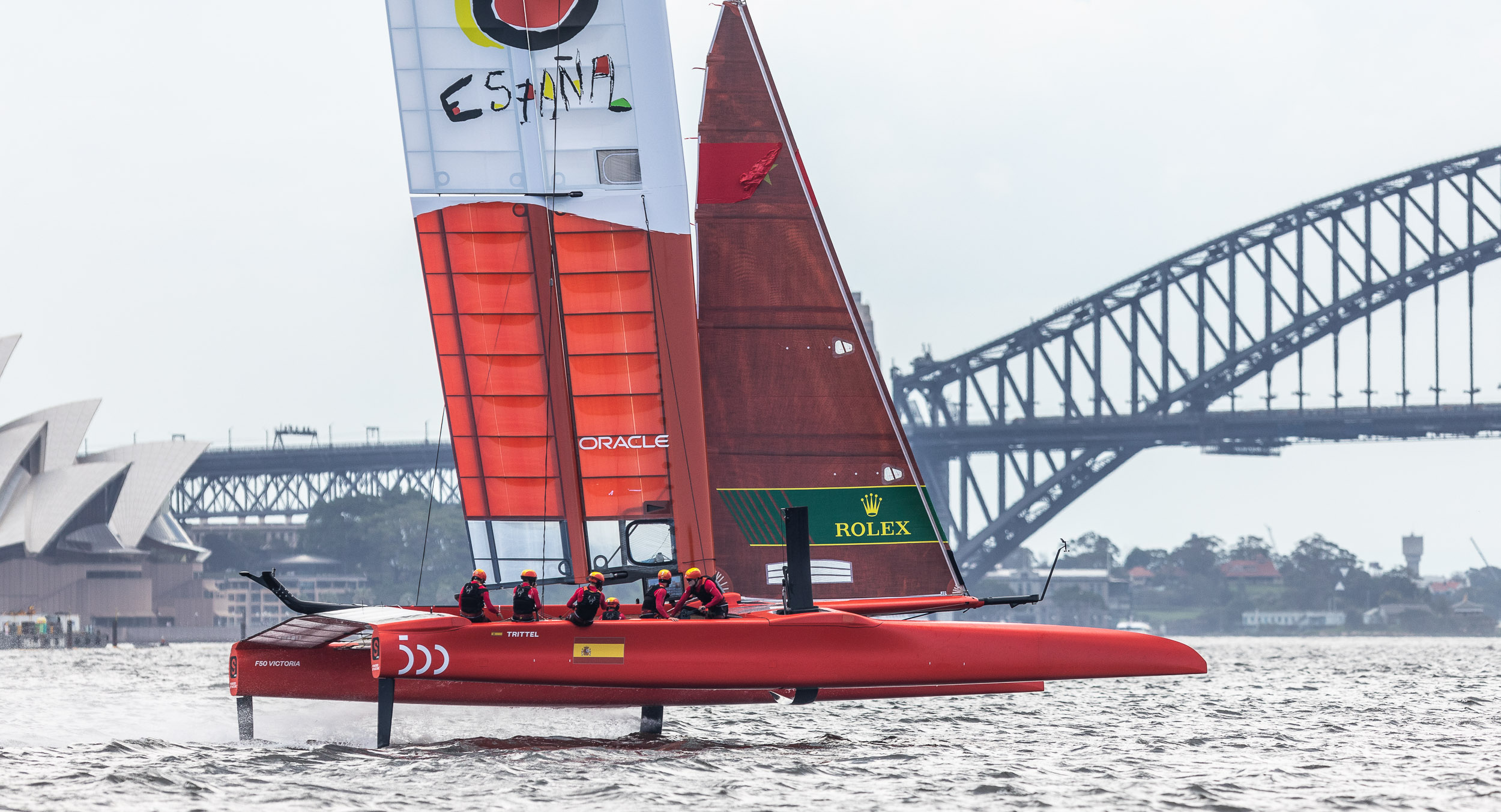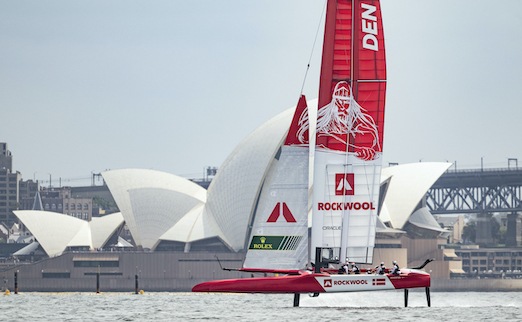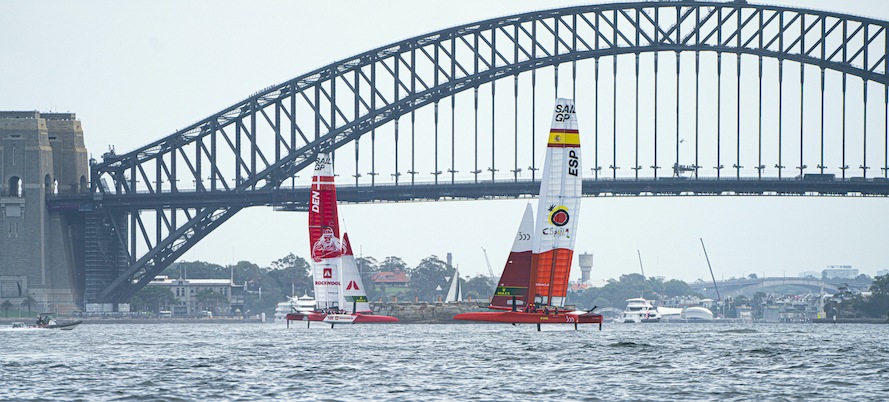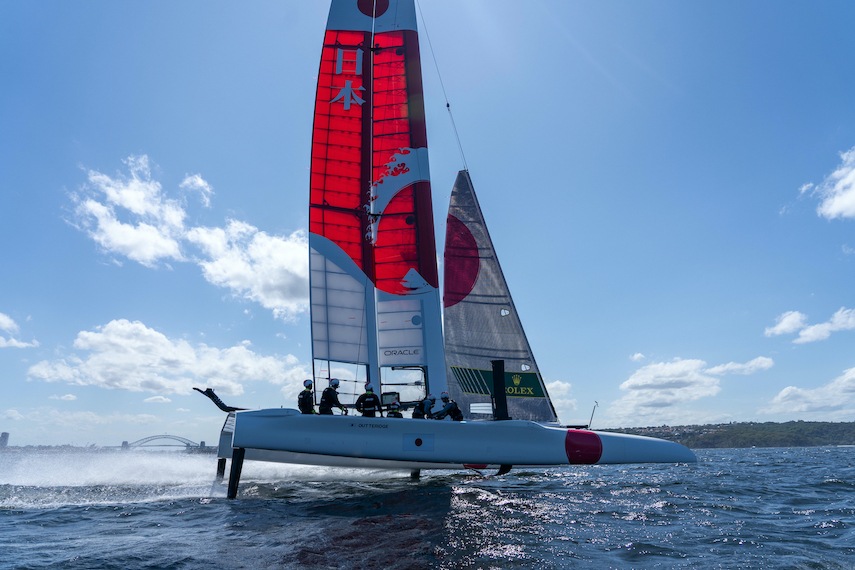Tom Slingsby: game changer
Tom Slingsby and the Australia SailGP Team will start their defence of last year’s thrilling season’s victory on Friday on Sydney Harbour.
25 February 2020
Advertisement
Slingsby sat down with Sails Editor Scott Alle last December for an extended interview to talk about the intricate mechanics and team dynamics of guiding an F50 at maximum speed around a tight racecourse.
This year there will be changes to fastest fleet racing machines on water; one design wings and software upgrades that will ensure the SailGP circuit continues to roll back the technical boundaries of the sport.
I read Mike Drummond [SailGP Teachnical Director], attempting to explain what it’s like to actually steer the F50. He said it’s like balancing a broomstick on your finger, except this broomstick on your finger is only a few inches long and there’s another full-length broomstick on top of it. What is the margin of error? It must be very slight.
It’s getting used to sailing more of a 3D platform. You’ve got your ride height up and down, so your vertical height. You’ve got your heel, windward, leeward and then you’ve got your pitch moment. In traditional sailing you’re used to your heel, controlling that. Not so much your pitch moment, that’s usually done by the design of your yacht and obviously no vertical fly height. So, you really need your senses working for you.
Advertisement
Like if for example, if Kyle Langford’s trying to get the windward heel right, he wants one to two degrees of windward heel. So, he’s using the wing sheet trying to get that exact amount but if Jason Waterhouse comes down a little bit low on his ride height, he takes away Kyle … The windward hull touches because Kyle’s got two degrees and then it can be me complaining to Kyle, ‘You’ve got too much windward heel.’ And then he says, ‘Well no Jason’s flying too low’. And it’s just the communication. And then they might yell at me for not getting the pitch of the boat right where the amount of rudder lift.
So, it’s the communication between our whole team to get the whole package right and get the boat performing. It’s a new challenge for all of us and its exciting and the levels just going up and up. Yeah, we just want to race against the best and be proven and beat these guys on the water.
So, those little adjustments that you’re talking about, is it that much or is it that-
It’s tiny.
It’s just that much on the grip or something like that?
Yep, it’s the way we move the ride height with the controls. It’s tiny movements with your fingertips. With me, if I get the rudders point one or point two of a degree out, the guys are yelling at me that the rudders aren’t right, that we don’t have the trim of the boat right. And if Kyle gets one degree too much heel, the hull touches down and I’m yelling at Kyle saying, ‘C’mon let’s get it going’.
But we work so well together as a team. There are no egos, we’re not trying to have a go at the other guy. We all are just trying to get the best out of the boat. And if I say, ‘C’mon Kyle let’s go,’ he doesn’t take it in a bad way that I’m having a go at him. He’s like, ‘Yep, yep. Nah, I’m on it.’ And if he yells at me, ‘C’mon Tom, press. We’re sailing too high and slow,’ in no way do I take that as negative feedback. It’s like, he’s on the ball and I’m not. I’ve drifted off. So, he’s just getting me back on. So yeah, as a team we work really well and these adjustments are just so fine that sometimes you just need your team members to help you and just say, ‘C’mon we need to change something to get 100 percent out of the boat.’
Is this by far the most technical sailing that you’ve done, the F-50?
Yeah, for sure. I mean, I guess it’s a bit different to the America’s Cup when we were developing this type of boat. We’re designing new parts and light, stiffer, stronger in the America’s cup. So, every day you’ve got new parts that might be a hydraulic cylinder and you’re deciding does it move fast enough, is it strong enough, is it going to break, all these other factors are coming.
But for technically sailing the boat, we’ve all got one designed boat, so we know … In the America’s cup you don’t know are they going quicker than you and you have to, you’re sitting there permanently guessing. You can assume that it’s something, some part on their boat is working better. But with us, we know that it’s our sailing ability and we know that we can make adjustments and catch them. And for me, that’s great. I always want it to be settled on the water.
It’s a much more level playing field?
It’s a level playing field and you know that it’s the skill of your teams sailing, not a piece of equipment on your boat. I love the America’s Cup and I do love the design and all that but more than that, I love competitive racing and knowing that your sailing team is going to match up evenly with another one.
Now, also really interesting is you are right on the boundary of technology with the issues of cavitation when you’re foiling. How much faster do you think you can go in this format realistically before you get all those physical limits that start to come in?
Yeah, I mean, we’re just hitting cavitation obviously. But having said that, the fastest we’ve gone was 51.24 knots and I felt completely in control. I didn’t feel like the boat was losing lift. I didn’t feel like it was out of control at all. It was comfortable steering. Jason Waterhouse was comfortable riding the height. In the America’s Cup last time our boards hit full cavitation at 45 knots. And they would lose lift immediately and you would immediately nosedive and crash.
With these ones?
With these foils have a slow onset of cavitation. So, slowly the air the water boils under the foil of the hull and so you very slowly lose lift and you keep control through cavitation. So, I think that we can go faster than that speed, for sure. I think we can, depending on how we tweak the boat and limit adjust parameters, I think we can be sailing downwind sitting on 50 knots. And I think a top speed, with this foil package is probably possible 53-54 knots. I think that’s when you would hit issues with control and not be able to go any quicker.
So, you’re really steering it right on the edge all the time there at the maximum speed?
Yeah, for sure. And I mean, you’re going so quick, it, the tiny adjustments that Jason Waterhouse the flight controller is making at those speeds obviously if you move the foil a degree going 20 knots it’s going to be a very slow movement. But if you do it over 50 knots it’s just way too much. He has to go point one, point one either way, non-stop, always moving, making very small adjustments. At the moment, the way the format is we don’t really get a lot of training time in between events. The boats are on a tight logistics deadline and they get packed up and put on a ship and we get two or three days before the event starts, so it is hard to improve quickly. But the rules are the same for everyone and yeah, we’re happy. We’re really enjoying it.
Can you take me inside a little bit of your psychology before a race? Where’s your head you know, ten minutes before the start?
I’ve just got a checklist in my head. We plan our whole pre-start out well before we get out there. And we say, “Okay, we need to tick off gybes, round-ups, tacks, bear aways and stop, go, accelerations.
So, it’s like a pre-flight checklist? Would you call it?
Yes. And it’s all done on timing and we say: ‘Okay, we’re going to do the tack bear aways at 35 minutes to go. We’ll do ten of them, we’ll be wrapped at 25 minutes to go. Then we want to do a stop, go, acceleration and then we’ll be wrapped at 15 minutes before start. And then we’re going to three practice starts, which are going wrap us up with 5 minutes to go before the start. Chase boat alongside, let’s go at 3 minutes before the start and into it.” So, we have it all mapped out before every race. And if something goes wrong, we have to adjust on the fly. If we break gear and we can’t practice one thing, then we choose which Is the least important and push that to the side. So, there’s a lot of, I guess science for want of a better word, behind what we’re doing out there and we’ve got Philippe Presti who’s extremely organised and precise and he keeps us very professional with our timings.
What about the improvements for the F-50’s next year (2020). I know there’s the new jib and wing arrangements. The idea is that you’ll be up foiling what 4 knots of breeze or something like that?
Yeah, the new wings. In all honesty I’ve heard that there could be delays in those. I think the plan is to get the little wing out first so we can sail in more wind, so the theory is up to 30 knots. It’s all wave dependent. Yeah, and then the big wings might not make it for next season. That’s what I’ve heard, I don’t know yet.
What that will do of course is give you the ability to cross a greater wind range, right?
Yeah. So, obviously we’re trying to improve SailGP, make it better and then one of the things we obviously deal with is weather conditions, and not enough wind, too much wind. So, we just want to increase that range at the moment. We can foil in about five knots maybe six, and I think we’re a bit limited in maybe 23-24 knots. The plan is to go from three knots to 30 knots. So, we have an 18-metre wing, for sort of your 17-30. And a 24-metre wing, which is what we have now the standard which is sort of from your seven-17. And then light wind from sort of three-seven.
Who would you say has been the biggest improver or improvers over the first season of SailGP?
China in the results, and the way they raced. But the team that went from third to sixth in the last event, team USA, I thought were the biggest improver and their results just didn’t show it. They capsized in Cowes and had a breakdown in Marseille and just didn’t sail to their potential. In training the British team have been the fastest team on the water and we’re constantly looking at their data trying to figure out why we can’t match them upwind. We feel that they’ve, for whatever reason, they’re sailing the boat the quickest and we’re looking at their wing setup, we’re looking at their rudder setup and trying to figure out what the differences could be. And Nathan Outridge completely agrees; we don’t know why they’re going faster on the water, but unfortunately their racing has let them down.
Who have been your most influential role models in sailing? You have sailed with and against many world and Olympic champions.
I admire Robert Scheidt’s determination and his I guess dedication just to go, go, go consistently for so long. Ben Ainslie’s aggression. It can unravel at times, but I love his win at all costs type attitude on the water. John Bertrand is a good friend and I love the way he has a grand vision.
And then probably Michael Blackburn. For me he was probably the biggest influencer in my career. I was a young talented kid and I had all the skill, but I had no professionalism. I didn’t know how to train effectively, I didn’t know how to dedicate my time to a cause, and he really taught me about, if you say you’re on the water at 2 o’clock, you’re on the water at 2 o’clock. And he used to leave me behind if I wasn’t there on time. He used to sail off Sydney heads and I used to be five minutes behind him the whole way out here. He’d never wait for me. He’d sail five miles offshore and I’m five minutes behind him the whole way. And I used to be furious, but he taught me that if you say you’re going to do something, you do it. And training’s so important off the water and on the water and so I’d say he’s probably been the biggest factor in my career to date.
sailgp.com
Advertisement
Advertisement
Advertisement


